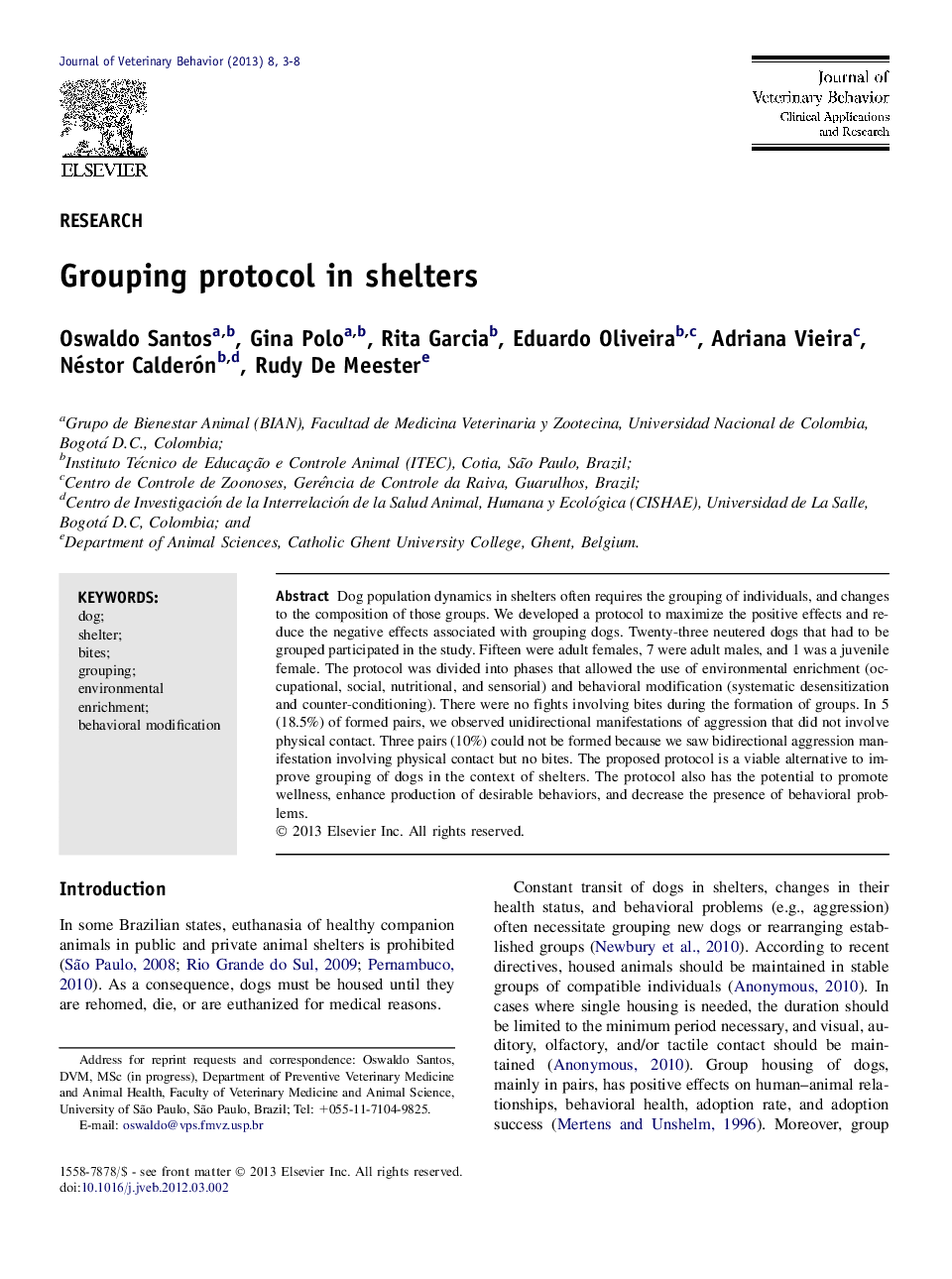| Article ID | Journal | Published Year | Pages | File Type |
|---|---|---|---|---|
| 2399687 | Journal of Veterinary Behavior: Clinical Applications and Research | 2013 | 6 Pages |
Dog population dynamics in shelters often requires the grouping of individuals, and changes to the composition of those groups. We developed a protocol to maximize the positive effects and reduce the negative effects associated with grouping dogs. Twenty-three neutered dogs that had to be grouped participated in the study. Fifteen were adult females, 7 were adult males, and 1 was a juvenile female. The protocol was divided into phases that allowed the use of environmental enrichment (occupational, social, nutritional, and sensorial) and behavioral modification (systematic desensitization and counter-conditioning). There were no fights involving bites during the formation of groups. In 5 (18.5%) of formed pairs, we observed unidirectional manifestations of aggression that did not involve physical contact. Three pairs (10%) could not be formed because we saw bidirectional aggression manifestation involving physical contact but no bites. The proposed protocol is a viable alternative to improve grouping of dogs in the context of shelters. The protocol also has the potential to promote wellness, enhance production of desirable behaviors, and decrease the presence of behavioral problems.
